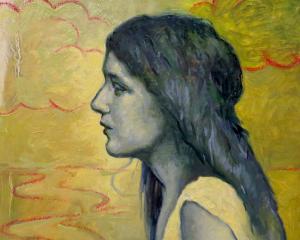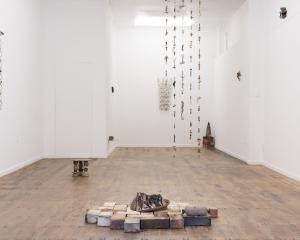
Coming from a family of collectors, it is no surprise Rod Eales has a collection of her own.
It started with a little help from her mother, who used to scour trading websites and started picking up Crown Lynn swan vases for her.
''I said yes to one. I did not plan on having all these swans, but she kept going.''
That was in the days when the swans were not as sought after as they are today.

''I'd love some more, but they are too hard to source these days.''
Her interest in the ceramic swans grew and she began reading books about their history including Crown Lynn a New Zealand Icon, by Valerie Ringer Monk, whom she later contacted about her art project.
''I've always really liked the history of things and I've always painted still life, so it's probably a natural progression.
''I decided to do a history of the swans in pictorial form.''
The concept meant starting from the beginning when the New Zealand company Crown Lynn, which originally produced bricks and pipes, decided after World War 2 to closely model some British designs in its new range of decorative products - the most memorable being the swan vase.
It was produced in a range of pastel colours and trickle glazes and then mass produced in soft matt white and black from the 1940s and was the gift of choice for special occasions until the 1960s.
Then she followed the journey of the swan through the 1970s and 1980s when they became a kitch item relegated to the back of a cupboard or second-hand shop.
Crown Lynn itself closed during the 1980s economic downturn.
The swans have recently become highly collectable and fetch good prices.
Eales wanted to make sure she covered the swan's history, so came up with a list of milestones in its history.
''I didn't want there to be too many or to few. They had to show the whole story.''
To depict New Zealand making the swan its own, Eales painted the swan - both the British version, one of which she owns, and the ''Kiwi'' version with Kowhai to represent New Zealand and the English rose.
''To show we've claimed it.''

The vase's time as back-of-the-cupboard junk is depicted in moody, shadowy colours.
To show Crown Lynn's demise, she visited second-hand shops looking for tall vases she could break and paint with a shattered image in dark colours.
''I wasn't going to smash a swan.''
For the end of the series, Eales painted the swan on a pedestal encased in a glass dome to show its elevation from junk to precious treasure and ''reinstated'' a crown on it. These days, Swans can go for anywhere from $200 for a small one to nearly $400 for a large one.
She describes the circular and oval oil on board works as ''still life, but not traditional still life''.
''I'm pleased with them. They do tell a story.''

''Many people don't realise the rich colours they produced.''
One of her earlier swan works, Fragment of an Icon, won first prize at the Otago Art Society's 2017 Edinburgh Realty Art Awards.
Eales paints in a studio at her Dunedin home two days a week and spends the other three days working in early childhood, specialising in children's art.
Those two days are precious to her. ''I don't dilly dally around. People know not to come around for a cup of tea on those days.''

''It reaffirmed what I was doing and what other people were doing and thinking.''
She often took her own work to her classes to show to the children and takes children on outings to her exhibitions so they can see ''art in the real world'' and know ''that people do it as a real job''.
''It's important they develop a language of how to look, see and think. It's part of the cognitive process that feeds into every aspect of being.
''It's about processes and learning the language of art.''
All projects reflect the children's interests and generally morph into places she can never anticipate.
''I guess that is why things are always so exciting.''
A couple of years ago, Eales ran a crowd-funding campaign to publish a book, It's Dark in Space, featuring 50 colour plates of drawings about space created by children at the Early Childhood on Stafford centre.
The works were the result of a long-term investigation of space initiated by the children as they looked at the science, history, mysteries, drama and beauty of space.
Eales was a prolific drawer and writer as a child.
''I was always drawing with a Biro on Croxley lined refill paper from my mother.''
But back then she did not realise art could be a career and instead she chose to teach.
When she came across art teachers at high school she thought that would be the perfect mix.
''I got a job as a teacher aid in a kindergarten and fell in love with that age group. They are uplifting, magical.''
To see
‘‘Portrait of an Icon’’, Rod Eales, Artist’s Room, opens Saturday.












